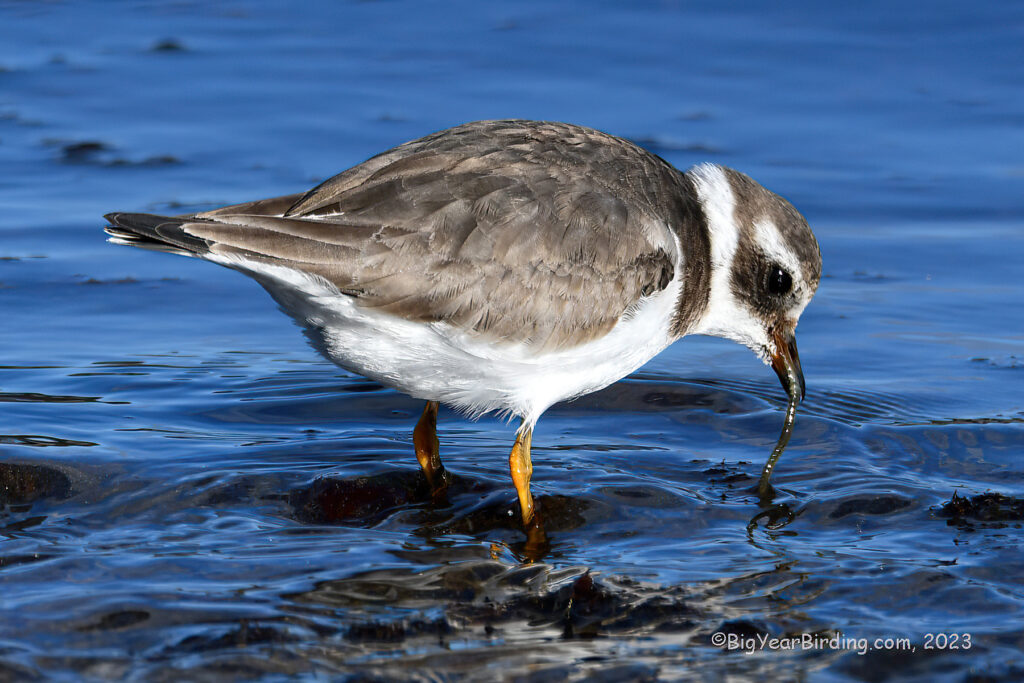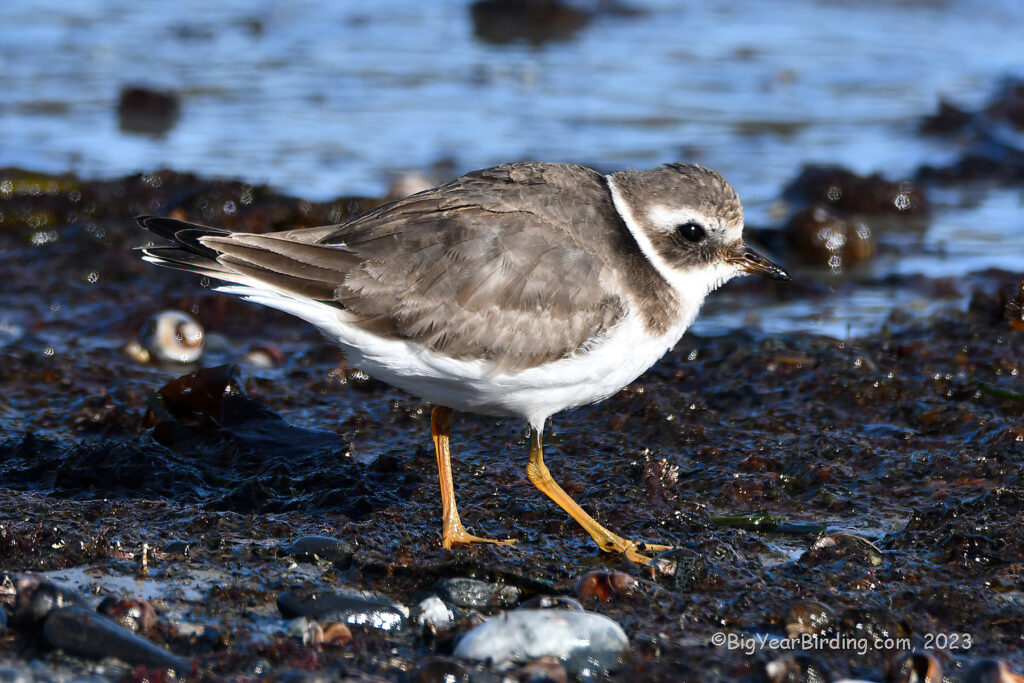
The Common Ringed Plover (Charadrius hiaticula) is a small migratory bird that can be found throughout Europe, Asia, and northern Africa. It is a small wader, measuring approximately 7-8 inches in length and weighing around 1.5-2.5 ounces. This bird has a distinctive black and white plumage, with a black mask and a white forehead and throat. The legs are a bright orange-yellow, which makes it easy to identify when in flight or running along the shoreline.
One of the most distinguishing features of the Common Ringed Plover is the dark ring around its neck, which gives it its name. This ring is particularly visible during the breeding season. The bird’s upperparts are a sandy-brown color, while the underparts are white. In flight, the wings are black with a white stripe, and the tail is also black.
Common Ringed Plovers are migratory birds, and they breed in the Arctic tundra, where they build their nests on the ground. They lay 2-4 eggs, which are incubated by both parents. After the breeding season, they migrate south to coastal areas of Africa and Asia, where they spend the winter months. During migration, they may be seen in large flocks, which can number in the thousands.
This species is commonly found in coastal areas, particularly sandy beaches, estuaries, and salt pans. They feed on insects, crustaceans, and mollusks, which they find by probing the sand with their bills. When not feeding, they can be seen running along the shoreline or resting on the beach.

Common Ringed Plovers are a widespread and abundant species, with a global population estimated at around 700,000 individuals. However, they are still vulnerable to habitat loss and disturbance, particularly during the breeding season. Conservation efforts are underway to protect their breeding grounds and wintering habitats, and to raise awareness about the importance of these birds and their habitats.

